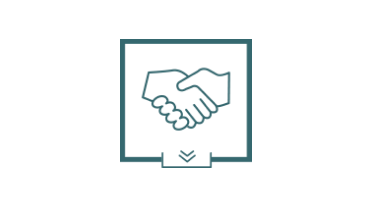How Performance Management is Improved With an HCM Platform

Written by Complete Payroll


Performance management is a key—perhaps the key—factor in success as a manager. Your reports rely on you to understand the difference between success and failure in their positions, to assist them in identifying their own strengths and weaknesses, to communicate higher-level goals and perspectives effectively, and to help them grow in their careers.
And, of course, the company is relying on you to do this as well. Productivity, innovation, and morale all rely heavily on the work managers do in tracking and fostering the performance of employees.
When it comes to how this work is integrated with the company’s broader technology solutions, however, there is often a painful disconnect, leaving managers to design systems on their own. Human capital management systems can streamline performance management information and integrate it fully into broader systems of managing employee (and even applicant) data, allowing managers to focus on their people, rather than attempting to stitch together random pieces of tech to suit their needs.
Keep files unified and accessible
If you manage employees, you no doubt have a wide variety of documentation on their performance, ranging from formal reviews, to notes from clients or vendors (“Tell Kate we really appreciated the quick turnaround on that last update!”), to productivity metrics. While it’s not terribly challenging to keep this sort of documentation in a particular folder, organizing it and making it useful to others is an entirely different question.
Human capital management platforms enable you to do this quickly and easily. This way, if you want to nominate your employee for an award, if you take a leave of absence and someone else needs to take on your team for several months, or if there is an investigation going on due to an accusation of discrimination, it’s easy to provide access to your clear and collected information.
Track performance across managers and positions
Today’s teams aren’t as static as they once were. More and more often, employees are doing project-based work across departmental lines, and may answer to different managers depending on the current task at hand. Even for those whose work is more operational in nature will eventually find themselves reporting to someone new, either due to promotion, reorganization, or their own manager moving on to a new role.
For those employees with a formal supervisor that stays the same but who is then “loaned out” to teams for project work, managers can easily request any pertinent information on their employee’s performance from the project manager through their human capital management platform.
For those who are inheriting an employee or team on a more permanent basis, they are transferred over in the system as the new manager, providing them with all the performance data that they accumulated in their former role. Not only does this provide a smoother transition for the employee, who doesn’t need to go through the whole process of reiterating their past accomplishments for their new supervisor, but this gives the manager a more holistic and contextual understanding of their reports, enabling them to better anticipate and meet their needs.
Get a head start on your data analysis
Data analysis is a huge part of understanding employee performance. This is true on an individual level, but even more so when looking at employee information in aggregate. The challenge of big data, however, isn’t finding data. It’s the BIG part that makes things complicated. Unless you were an analyst in a past life, the sheer amount of information available can feel overwhelming.
A good human capital management platform will give you a head start in this area, tackling some foundational metrics for you, so that you’re not left with a spreadsheet a mile long and a list of questions that’s even longer. While this initial analysis isn’t the only quantitative study you’ll want to do when evaluating individual and team performance, it will point out any areas that are unusually positive or concerning, giving you an area on which to focus.
Ready to take your performance management to the next level?
A human capital management platform might be the right choice for your business. Get in touch to learn more.
Our complete guide on Human Capital Management is a comprehensive resource about how effective HCM helps organizations manage their workforce more effectively. Whether you're interested in seeing an HCM platform or just want to learn more about the practice of Human Capital Management, this page is for you.
More Blog Posts about HCM Topics:
- How Human Resource Management is Improved with an HCM Platform
- How New Hire Onboarding is Improved with an HCM Platform
- The Benefits of Implementing a Human Capital Management System
- How Recruitment Management is Improved with an HCM Platform
- What to Consider When Choosing an HCM Software Platform
- How Employee Benefits Management is Improved with an HCM Platform
- What is Human Capital Management?
- Best Practices for Employee Applicant Tracking
- How Reporting and Analytics is Improved with an HCM Platform
- About Applicant Tracking and its Benefit to HR Managers
- How Self-Service Portals and Improved with an HCM Platform
- Best Practices for Effective Employee Communications
- Employee Training Programs - Best Practices for Employers

















 Get Instant Blog Notifications
Get Instant Blog Notifications


